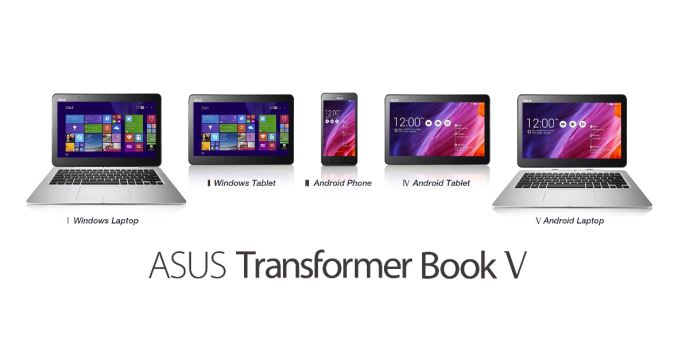Unboxing:
The Acer Liquid Z3 Duo comes packaged in a simple, cardboard box. It's particularly inoffensive and it reminds us of the box you'd expect to see your shiny new Samsung Galaxy device arrive in in terms of minimalism. It's simple, but strangely elegant. The wrapped around silver label, with four different shades, contributes a lot to your initial impressions. This label tells you the model of the device and then you have to head around to the other side of the box to find out all of the technical details about the phone.
From the box alone, you wouldn't be able to guess the price of the phone; this box could contain anything and you wouldn't be surprise. Acer hit a home run with the packaging and in this instance you can easily believe that less is more!
 |
| Here's what's in the box! |
Design:
Once you're past the box, then the Liquid Z3 will be sitting up front and centre, wrapped in the factory packaging. When you lay eyes on the device it's inoffensive and initially we had to do a double take on the capacitive button configuration, because of the striking similarities between this and the HTC First, which you can see below!
Seeing as this is a budget handset there's really not too much spectacular stuff on this phone. The whole the device is deliberately inoffensive; there's not too much bezel, the device is well proportioned and if this is your first smartphone there's very little to dislike here. In fact, the glimmering Acer logo and the 'smile', as I've come to call it, (the curve which acts as the ear piece for phone calls) make the front of the handset surprisingly appealing.
It's to the sides and at the rear of the device that it becomes a lot more obvious that we're dealing with an inexpensive phone here. The matte battery cover on the back of the phone is a cheap plastic, somewhat reminiscent of Samsung's typical offering, although slightly thicker and a lot less flexible. The white version, which we have, is a potent dirt magnet, which is just something to bear in mind, when choosing your colour, as we assume the black unit, wouldn't show this up quite as readily.
As for all the hard button controls and ports they're nicely spread around the device. The power button takes pride of place right in the middle of the top edge of the phone and it's accompanied up there by the 3.5mm headphone jack. The volume rocker is then found on the right-hand side of the phone and there's no physical camera button here and no buttons on the left edge. And for those of you who like to text in bed you'll be pleased to here that Acer have opted to put the Micro-USB port on the bottom of the phone!
Display:
 |
| Click to enlarge! |
The display is probably one of the weakest parts of the device. The 3.5" screen carries a resolution of 480 x 320p, which is perfectly acceptable for a budget handset like this, but if you're used to using a device with a 720p display, then the difference will be immediately obvious.
On the plus side though, the screen goes nice and bright, although in our experience the autumn direct sunlight has given us a few problems making out exactly what the screen says, but for this
sort of money you can't really complain about the brightness or indeed the slight light bleeding which you'll notice all of the way around the screen edges when you look at the phone from funny angles and which becomes more prevalent in the dark. To be honest though, you'll be checking this thing out straight on most of the time, so even the slightly off viewing angles won't really be an issue at all!
Some people may take issue with the two point multi-touch limit, but it shouldn't pose you too many problems in day to day use, although five point input would give the device better pinch to zoom accuracy, amongst other things.
Performance:
With a dual-core Mediatek processor on board, it's easy to understand reservations that you'll have about the phones' ability to push along Android 4.2.2. The reality is that you don't really need to be worried at all. For the most part the phone is kept ticking along nicely in every day usage. There's not too many pixels to push here and yes, you may notice occasional slow downs, but the phone can handle the vast majority of what you'll throw at it without any problems at all.

The fundamental apps like messaging, the dialler, even Facebook and Twitter load nice and quickly and YouTube playback is good too, although if you have a tablet that might give you a considerably more enjoyable viewing experience, just because the 3.5" screen is quite small by today's standards. There were points where there was some stuttering when moving between the app drawer screens, but this tended to be if we'd forgotten to close apps after using them, but again this didn't detract too much from the overall usage of the phone. The relatively sock build of Android undoubtedly helps with this!
The benchmark, to this right, gives you an idea of how powerful this device when you measure it
on Quadrant's testing criteria and that's probably an accurate reflection of how well this little guy performs, especially when you factor in that there are considerably less pixels to push on this phone than something like the Galaxy Nexus, which has a 720p screen.
Perhaps the one thing which would have helped considerably would have been a little bit more RAM. The 512MB allotment is what you would expect to see in a budget device, but it would've been great if this was even bumped up to 768MB, just so multitasking could be easier.
All in all the bang for your buck in terms of performance is absolutely tremendous and there's nothing else at this price point which comes anywhere near, unless you're prepared to go for one of Nokia's Windows Phones. Oh, and before you ask, Angry Birds and Temple Run work perfectly well on the phone!
 |
| Click to enlarge! |
Storage:
The Liquid Z3 is a little light on storage initially with only a 4GB internal memory card installed and then 1.62GB of that is taken up by the system right from the off, leaving you with just over
2GB of space for apps, unless of course you purchase a MicroSD card to bump up your storage. This is probably a good idea right off the bat, especially if you want to take some music and video with you on the fly.
Battery:
Given that this is a dual-sim phone, you might be expecting the battery life to take a hit. So far though, the little phone has been surprisingly good and the 1500 mAh battery has been more than enough to get through a full day with more than three hours screen on time and with numerous email and social network accounts syncing in the background.
It might have something to do with the relatively low pixel density of the screen, which doesn't push the processor too hard, but either way it should last the majority of people through a day and if not, then you can always pick up a spare battery to carry around in your bag for camping trips or days out!
Camera and Speaker.
Unfortunately there's too many positive things to say about the Liquid Z3's camera. If we're trying to remain optimistic, it does at least have a rear-facing camera, but the reality is that you won't want to capture those special moments with this device, which is a bit of a shame really,
because this is the only real department which offers an almost unacceptable level of performance.
The speaker similarly promises more than it delivers. Acer are quite keen to promote the DTS sound improvements on the device, but while the speaker is ok, listening through headphones is a much better experience, just as it is on most phones.
Dual-Sim Implementation:
 |
| Click to enlarge! |
The Liquid Z3 Duo also, as the name
suggests, has Dual-Sim functionality. This is implemented well in the Z3. Both
of the sim cards are active at the same time, which essentially means that you
can receive texts and phone calls on either number because they’re both
connected to their networks all of the time.
In our experience there haven’t
been any issues with this system. One slightly strange thing is that the 3G sim
card seems to always have three bars of signal and then occasionally it will
tell you that you have no signal. We’re not sure if we honestly did always have
three bars of signal, but it seems that the 3G signal strength is either slow
to update or there’s some sort of software issue there. But, the 3G does work
nonetheless.
 |
| Click to enlarge! |
It’s also worth remembering that you have to
set your preference for sending text messages and making calls with, which if
you constantly swap between sim cards, is relatively simple, but Acer have
kindly added a little solid bar to show you which sim will be sending you text
messages as you type! If you want to change that quickly and easily then you
can just pull down the notification bar, whilst in the messaging app, and tap
across to the other sim, as you can see in the images to the right.
Conclusions.
We're pretty taken with this little thing; yes, it's obvious that corners have been cut to create a smartphone for under £100. But, if you consider that the phone has solid performance, runs Android 4.2.2 and has dual-sim functionality, the reality is that there is very little to complain about. If you're looking for a phone for a younger or older relative and you want something with the option to use a simplified interface then this is perfect, otherwise this is a great phone to take on business trips abroad
Rating: 9/10! For this money you can
not get anything near as good as this little phone!
You can pick one of these little beauties up from
Expansys here!



















































